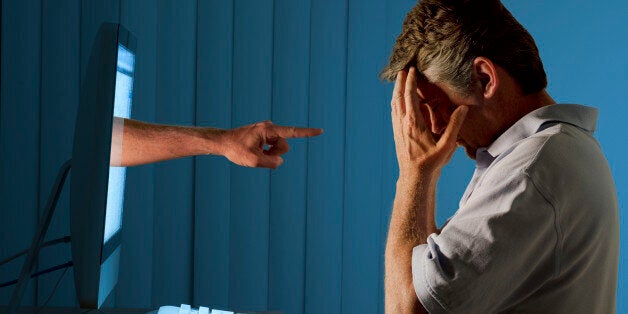
In 1705 in the picturesque fishing village of Pittenweem in Fife a furious mob seized a suspected witch, named Janet Cornfoot, and dragged her to the waterside. There they suspended her from a mooring rope and pelted her with stones. Next Cornfoot was hauled in and put under an old door, upon which rocks were piled until she was crushed. One man rode his horse and cart over her body to make certain she was dead.
This horrific episode belongs to what is sometimes called the 'great European witch-hunt'. The harm that Janet Cornford was said to have inflicted was not real, but the violence upon her was. Between the early fifteenth and late eighteenth centuries, 50,000 women and men from Massachusetts to Moscow, Italy to Iceland, died for the same crime: consorting with Satan, and using his power against others. Many were tortured into confessing and were executed, typically by burning, hanging or beheading. Between 1645 and 1647 Matthew Hopkins, the so-called 'Witchfinder General' - currently subject of an immersive experience at The London Dungeon - led a vicious campaign throughout England's eastern counties, resulting in around a hundred deaths.
So is it appropriate to use the term 'witch-hunt' to describe the conspiracies and conflicts of modern Western society? We hear it all the time in the media - police investigations, public inquiries, press campaigns of alleged vilification. And most recently we have heard attacks through social media - or 'cyber-bullying' - referred to as 'witch-hunts'. There are obvious parallels with historical events like the lynching of Janet Cornfoot: fear and rage unleashed by the moral majority against an isolated person, where prejudice and the spreading of gossip turn flimsy hearsay into terrifying fact.
In 2015 the former US presidential aide Monica Lewinsky described the role of the internet in her humiliation over her affair with Bill Clinton. "Cruelty to others is nothing new", she said, "but online, technologically enhanced shaming is amplified, uncontained, and permanently accessible". She explained how "the echo of embarrassment", once confined to families and neighbourhoods, now goes round the world in a heartbeat. It's a culture of humiliation sustained by the online community. And social media platforms, their benefits aside, permit the crowdsourcing of hatred. Numerous celebrities from to Justin Bieber to Stephen Fry have abandoned Twitter and so on, unable to weather the slings and arrows. Jesy Nelson from the band Little Mix was told by an internet troll to kill herself, and has complained of becoming reclusive.
Of course, however vicious, these assaults are not murderous. Yet they still do harm, causing anxiety and alienation and depression. A report from 2010 blamed half of the UK's suicides of 10-14-year-olds to bullying, a significant part of which was carried out using social media. One cannot avoid thinking that things have deteriorated since then. And attacks on famous and ordinary people alike often have a distinctly misogynistic streak. According to a recent study, over three weeks the words 'slut' and 'whore' were directed at no fewer than 6,500 Twitter users. Last month, the word 'witch' was used over 700,000 times on social media, and in various online blogs and forums.
So what can we do? Raising awareness helps. I've been working with The London Dungeon to inform about the misdemeanors of the past. We have been placing dark plaques in locations of historical note to tell the stories of witch hunts gone by, and even created an immersive experience to bring the darkness of the history to life.
We can also try harder, as Lewinsky suggests, "to live both online and off in a more compassionate world". But we should also address the causes of aggression. The past offers useful examples, like Janet Cornfoot's ordeal, which for all their historical specificity display familiar emotional undertones. Cyber-bullies click a mouse rather than wield a pitchfork, but the impulse is similar: an innate need to project fear and guilt and anger upon others. Obviously celebrities seem particularly fair game to trolls, who treat the internet as a wall from behind which they can safely incite abuse.
In the eighteenth century, the law against witches in Britain was replaced with one against persecuting witches. Janet Cornfoot's murderers escaped justice; others did not. In 1751 the ringleader of a mob that killed an old woman in Hertfordshire was hanged to deter others. And having dealt with witch-mobbing, today the law is turning its attention to 'virtual mobbing'. The Director of Public Prosecutions, Alison Saunders, advises that 'the internet is not an anonymous place where people can post without any consequences.' The courts are catching up with the cultural effects of new technologies, and will punish and protect. As Saunders warns: "If you are grossly abusive to people, if you are bullying or harassing people online, then we will prosecute in the same way as if you did it offline". It's a reassuring sentiment, and, like the Pittenweem tragedy, reminds us that victimisation is incompatible with civilisation, and that as humans we can always be better.
Malcolm Gaskill is Professor of Early Modern History at the University of East Anglia, and the author of Witchfinders: a Seventeenth-Century English Tragedy (2005), a book about Matthew Hopkins, 'Witchfinder General', the subject of a new immersive experience at The London Dungeon.